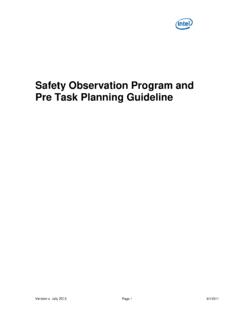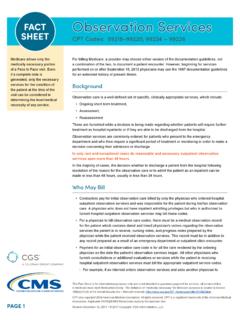Transcription of INFORMAL OBSERVATION FORM - Teachstone
1 INFORMAL OBSERVATION FORMO bserver: _____Teacher: _____Date/Time: _____ Age Level: _____ By utilizing this INFORMAL OBSERVATION Form, you are agreeing to the following:This INFORMAL OBSERVATION form is provided for use in INFORMAL classroom observations and is not intended to be used as a substitute for or in place of a full, formal CLASS OBSERVATION . This form is used with the permission of Teachstone Training, LLC, and only for observations occurring outside your standing, formal CLASS observations. Teachstone is the sole and exclusive owner of CLASS, including all score sheets, OBSERVATION forms, manuals, guides, and documents, together with all derivatives, updates, new versions and enhancements thereof. INFORMAL OBSERVATION Form This resource may be photocopied for classroom use.
2 Copyright 2019 Teachstone Training, LLC. All rights reserved. Teacher s Name:Date / Time: Focus Area (dimension, indicator, or behavioral marker):Behaviors to Notice: OBSERVATION Notes:Reflective Questions:Next Steps:Observer s Name: Focus Area (dimension, indicator, or behavioral marker) Behaviors to Notice OBSERVATION Notes Reflective Questions Next StepsHow to use the INFORMAL OBSERVATION formPlan your INFORMAL OBSERVATION Review your data, looking for areas of strength, growth opportunities, and variability in the teacher's , meet with the teacher and fill out the blue section of the form together. Ask the teacher when they would like you to observe their classroom. Choose a time for the OBSERVATION that is appropriate for the focus area. Short time-frames (15 30 minutes) typically work well.
3 Observe and prepare feedbackObserve the teacher at the agreed-upon time. You will likely note e ective interactions as well as some missed opportunities. When planning what to share with the teacher, keep in mind the following best practices aroundproviding feedback: Focus on moments of strength with less experienced teachers. The key is to build their self-e cacy around improving, and taking a strengths-based approach is ideal for novice teachers. Continue to focus on moments of strength with more experienced teachers, but plan to discuss areas for growth as reflection questions that encourage the teacher to continue to build self-awareness and practice specific and reflectMeet with the teacher within a day of the OBSERVATION , if possible. Discuss the OBSERVATION , using your planned questions to guide the conversation.
4 Collaborate to decide on next Form:This resource may be photocopied for classroom use. Copyright 2019 Teachstone Training, LLC. All rights reserved. Teacher s Name:Date / Time: Observer s Name:Trina CheersElise Eisenberg9/16/19 @ 9:30 amTeacher Sensitivity Awareness & Responsiveness Noticing lack of understanding or emotional need and responding in a timely manner. Acknowledging emotions and providing individualized assistance. Simon got upset when he couldn t see the pictures in the book. T asked, Simon, what s wrong? Can you see the pictures? Boys and girls, Simon s upset because he wants to see the pictures too. What can we do to make sure everyone can see the book? (children respond) Yes, we sit flat on our bottoms. T tied girl s shoe during circle when she noticed it was causing a distraction.
5 At small group, Aileen said there were 5 bears in the middle of the table. T helped her correctly count the 4 bears by holding her hand and pointing to each bear one at a time. T then decided to give each child a set of bears to count. You did such a great job noticing and responding to your students needs. Why do you think it s important to do this? How do you generally identify what your students needs are during circle and small group times? How did Aileen respond when you helped her count the bears and gave her a set to use during the lesson? How did you help her better understand one-to-one correspondence? Trina decided to anticipate her students needs by having hands-on math manipulatives for children to use during her counting lessons. She s going to ask her assistant to sit with the students during whole group so she can help Trina look for and respond to children s signs of trouble or need during morning circle.







